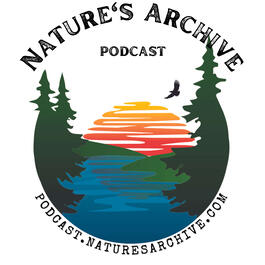
#87: California Condors with Tiana Williams-Claussen (Golden State Naturalist Crossover!)
Today’s episode is all about California Condors with Tiana Williams-Claussen, the director of the Yurok Tribe’s wildlife department. This episode is actually from my friend Michelle Fullner of the Golden State Naturalist podcast. If you don’t know Golden State Naturalist, I think this episode is pretty indicative of Michelle’s work. She travels around California to meet and interview interesting people in the field. There is a definite advantage to in-person interviews, and I wish I could do more. Even though this episode is about California Condors, and the podcast is California-centric, today’s episode is still broadly applicable. California Condors historically lived in a large chunk of the western North America, from southern Canada to northern Mexico. And the challenges facing Condors, and the efforts to reintroduce and sustain them have many parallels. Now, I don’t want to take away from Michelle’s introduction for this episode coming shortly. But I do want to tell you why I wanted to cover Condors on Nature’s Archive. Right off the bat, condors are huge - boasting a 9 foot wingspan. They’re also critically endangered, which is why Tiana Williams-Claussen is such a great guest - she’s leading a reintroduction program with the Yurok Tribe in northern California. As long time listeners know, I particularly enjoy covering overlooked and misrepresented flora and fauna. And for today, I’m going to lump condors and vultures together. In fact, in North America, vultures and condors are in the same family of birds, and occupy similar ecological roles. And what role is that? Well, the textbooks say “scavengers”. And if you are like most people, you might have an unconscious negative bias towards scavengers. Why? So much of our human-centric perspective is based on how we live, and casts a negative light towards other evolved lifestyles, such as parasitism, or in this case, scavenging. To scavenge - that is, eat already dead animals - one must have some pretty amazing adaptations. Afterall, the moment an animal dies, bacteria starts to take over. And the fact the animal died in the first place might indicate that it was already diseased, especially if it didn’t die as roadkill. If a diseased carcass remains on the landscape for an extended period of time, it can become a disease vector. But vultures and condors are special. Their acidic stomachs and unique immune systems help protect them. I heard a great reframing of the role condors and vultures play - instead of scavengers, they are nature’s immune system. By rapidly clearing dead animals, they prevent and halt disease spread. And there are examples around the world where vultures had died off for various, usually human-caused reasons, and this resulted in significant increases in diseases in other animals - including rabies. FULL SHOW NOTES Music: Spellbound by Brian Holtz Music Free download: https://filmmusic.io/song/9616-spellbound License (CC BY 4.0): https://filmmusic.io/standard-license Artist website: https://brianholtzmusic.com Support Us On Patreon! . Get inspired with the Jumpstart Nature Podcast - entertaining and immersive, it's the nature podcast we all need. Check past Nature's Archive episodes for amazing guests such as Dr. Doug Tallamy, Dr. Elaine Ingham, and Gabe Brown. And topics ranging from bird migration to fungi to slime mold!
From "Nature's Archive"


Comments
Add comment Feedback